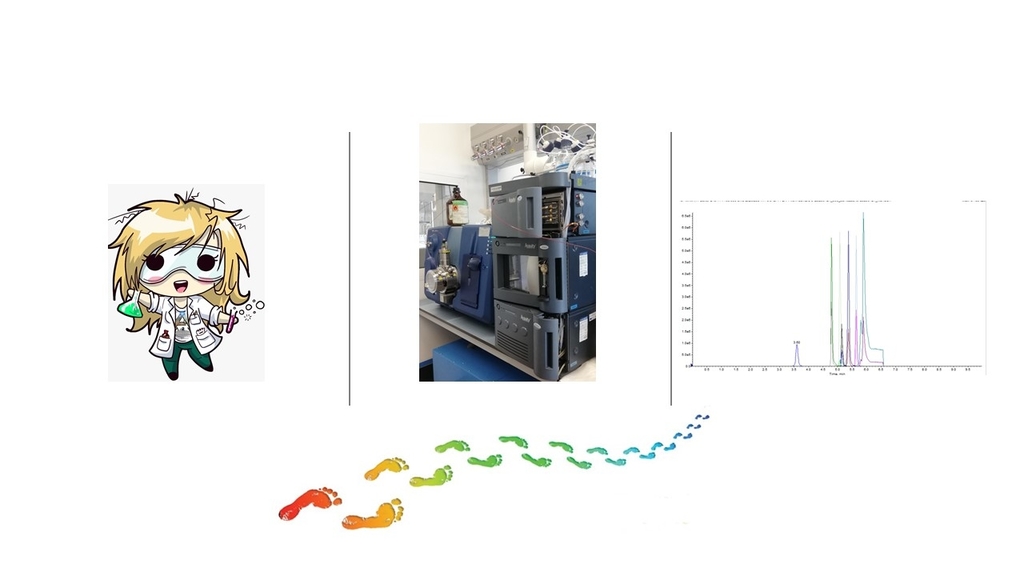04 May Revealing the Unseen
Barbara Topolovec (ESR5)

I was in the lab, with my eyes fixed on my sample.
At first, nothing happened, but after a few minutes, I saw them: red, yellow, and some blue spots. I repeated two more times the same experiment; my brain couldn’t believe what my eyes had noticed.
Back then, I was working with a technique called thin-layer chromatography. That was my first time when I discovered the “art of chromatography”.
It feels like it was yesterday, but science has moved on, and today I work with more sophisticated methods.
But how does this relate to my project?
The main objective of my project is to understand the transformation of specific micropollutants during plasma treatment. To do this, I rely on the most advanced tool in analytical chemistry: the liquid chromatography-mass spectrometry (LC-MS).
Since my fellow Amit already explained what plasma treatment is, I will only focus on that powerful tool used in analytical chemistry.
Chromatography is one of the most versatile analytical techniques nowadays because it enables us to separate, identify, and quantify almost all the compounds that are present in any liquid sample, even at meager amounts. Thus, it can reveal the “unseen“.
What started in the early 1900s as a simple separation of leaf pigments, today it exists in various forms. Thanks to the new inventions and improvements in the field of chromatography, followed by related applications such as mass spectrometry, we identified a whole spectrum of new contaminants present in the environment.
These new “friends” present in water at low concentrations are referred to as emerging contaminants (ECs). Moreover, these are continually evolving and therefore represent a great challenge for environmental monitoring.
In this case, my main objective is to obtain the first information about the transformation and removal processes occurring during plasma treatment. That means identifying the intermediate and final transformation products (TPs).
At this point, you may be wondering: what are these emerging contaminants that I am talking about?
Well, have you ever heard about PFAS?
Per- and polyfluoroalkyl substances, or simply PFAS, are the most environmentally persistent contaminants, and they are present a wide range of consumer products such as pots, pizza boxes, and stain repellents. There are several ways people can be exposed to these chemicals, and one of these is through the water.
Today, I still have my eyes fixed on my samples. Although circumstances we all face together these days have postponed my laboratory work, I am still able to analyze and reveal the unseen from my home office.
I am very far from that thin-layer chromatography, and I just started 😊
Image sources:
– https://www.pinterest.com/pin/540713499004974025/
– https://www.oagb.org.uk/what-are-the-12-steps-of-oa/
